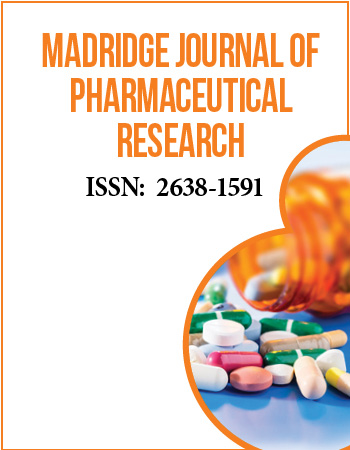International Conference on Medicinal and Pharmaceutical Chemistry
December 5-7, 2016 | Dubai, UAE
Lead modification approaches in the design, synthesis and evaluation of novel chemical entities for muscarinic acetylcholine receptors
1Ajman University of Science and Technology, UAE
2Temple University, Philadelphia, USA
Purpose: The goal of this study was to modify structurally our low affinity lead lactones in an effort to improve receptor affinity. The design of new chemical entities for muscarinic receptors was based on molecular modeling and structure activity relationship studies from the literature and our previous work.
Methods: Lead Lactone-containing compounds previously synthesized in our laboratory demonstrated moderate affinity for muscarinic receptors. Structure activity relationship (SAR) data from the literature suggest that specific amine-containing functionalities repeatedly appear in high affinity muscarinic ligands. Based on these reports, various lead modification approaches were utilized in order to design a series of novel muscarinic ligands containing the lactone ring (or bioisostere) and an aminecontaining fragment reported in other high affinity ligands. Homologation approach was selected in the design of a series of lactone based compounds. Bioisosteric approach for the lactone ring replacement (e.g., substituted tetrahydrofuran, 1,3-benzodioxoles, oxazolidinones and chromone) were also investigated. The need for rapid and efficient routes to the scaffolds prompted the development of several highly efficient synthetic methods to structurally diverse target compounds. Test compounds were evaluated for affinity in muscarinic binding assays. The ligands exhibiting % specific inhibition >50% were selected for further evaluation (IC50 data and ultimately subtype selectivity).
Results: A lactone-based ligand having diphenylmethylpiperazine fragment was identified as non-selective muscarinic ligand with IC50 of 340 nM whereas its homolog was found to have higher affinity (IC50 of 17 nM). Preliminary binding study suggests that substituted tetrahydrofuran, 1,3-benzodioxoles, oxazolidinones and chromone nuclei represent possible bioisosteric replacements for the lactone ring in the series of ligands evaluated herein. The ligands evaluated for subtype selectivity in the muscarinic assays were found to be non-selective.
Conclusions: Novel synthetic routes were developed for the synthesis of target compounds. The compounds reported herein represent an interesting series of novel muscarinic ligands that require further study. The design of future ligands will be based on the SAR data supplied in this work as well as SAR studies reported in the literature.
Biography:
Richie R. Bhandare received his B.Pharm and M.Pharm from University of Mumbai and PhD in Medicinal Chemistry from School of Pharmacy, Temple University, Philadelphia, USA in 2013. He was working at a leading Pharmacy College in Mumbai as an Assistant Professor in Pharmaceutical Chemistry. He has guided 13 M.Pharm students. He works in the area of designing novel compounds for muscarinic, serotonergic and retinoic receptors and organic reaction method development. He will now be associated with College of Pharmacy and Health Sciences, Ajman University of Science and Technology, Ajman, UAE as an Assistant Professor in Medicinal Chemistry.


